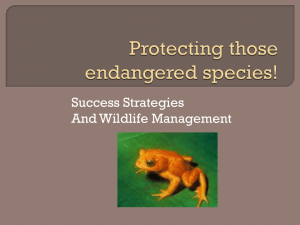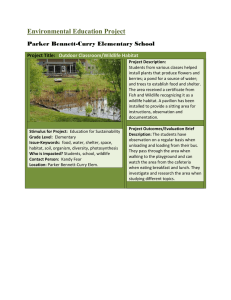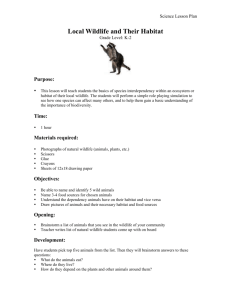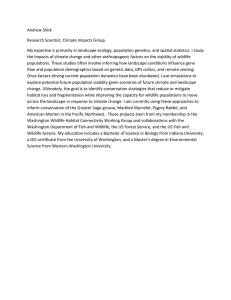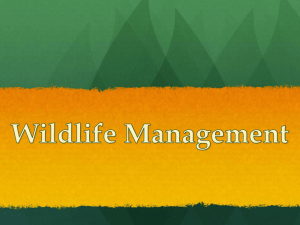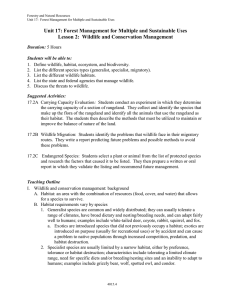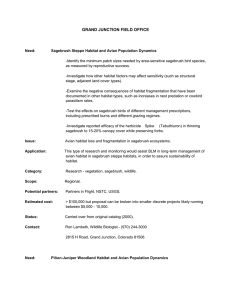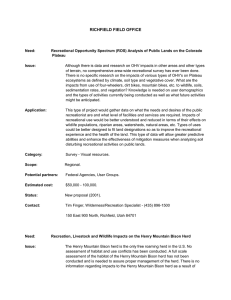Activity: Attwater's Recovery Plan
advertisement
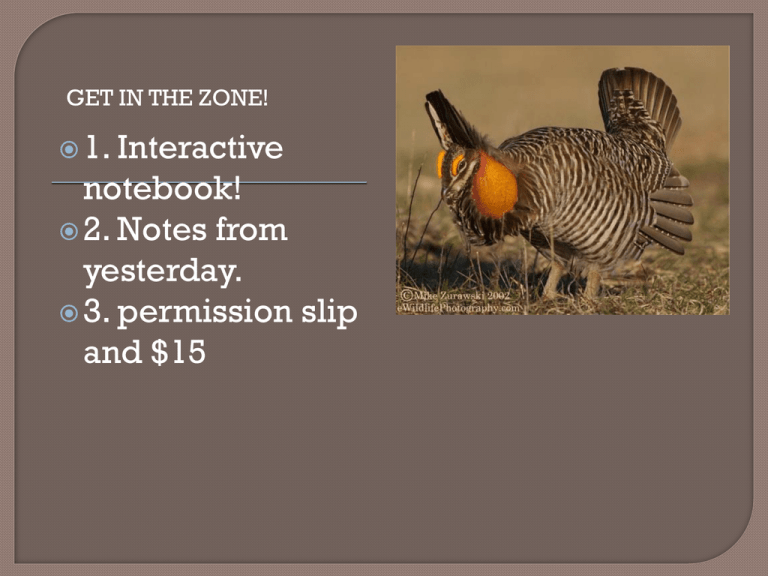
GET IN THE ZONE! 1. Interactive notebook! 2. Notes from yesterday. 3. permission slip and $15 Wildlife managers need to identify • population size and carrying capacity • critical habitat • food requirements • Nesting/breeding requirements • Symbiotic relationships • Special species needs Census (counting each individual) Random Sampling (estimating population size from smaller sample) Habitat management and improvement • Setting aside reserves, coordinating with private landowners Connecting fragmented habitat allows animals from each smaller area to safely get to other areas. Habitat management and improvement • Creating artificial nesting sites (Red cockaded woodpecker in Eastern Texas) saves the bird time so they can reproduce more frequently Federal program Pays land owners to put marginal lands back into native vegetation to provide wildlife habitat 31.4 million acres currently Removal of invasive species, replanting native species, using prescribed burns Individuals are captured in wellpopulated areas and moved to lesspopulaed areas Increases genetic biodiversity 1996 wolves reintroduced in Yellowstone Camera traps on trees. When an animal crosses the infrared beam of light a picture is taken. Wildlife managers can tell exactly when the animal was there. Usually with egg- layers – birds/amphibians Young are raised until they can survive on their own in the wild and then released Genetic index of endangered species Cross breeding of distantly-related individuals to improve the population Radio collars can be put on birds/mammals to keep track of what habitat they use and whether they are alive or dead. Oct 21 – Wildlife Management tools Glue in yesterday’s notes. 1973 Creates a list of threatened and endangered species Organisms on the list cannot be harmed and their habitat cannot be disrupted All species on the list must have a recovery plan US Fish and Wildlife Service Marine National Fisheries Service Check out the “boxscore” by the Fish and Wildlife Service USFWS box score How would you protect this species? What would you need to know? 0-1min 50 sec LIFE HISTORY Chicks eat insects Adults eat seeds and insects Fly short distances Nest on ground Males “boom” on “lek” to attract mates THREATS Habitat loss Invasive fire ants Over hunting for food Trees in prairies are perches for hawks Native predators eat 70% of eggs WILDLIFE MANAGEMENT PAGE, LEFT SIDE List best practices Provide rationale for each choice (explanation)

